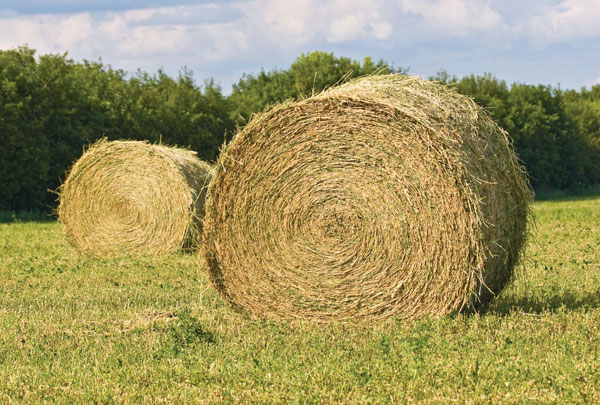Source: AgriLife

On many farms, hay feeding losses are as high as storage losses. Some hay losses during feeding can be expected with any feeding system, but the amount of loss varies with the system used. The major objective for any feeding system should be to keep loses to a practical minimum level, thus permitting animals to consume the majority of hay offered at feeding.
Feeding losses include trampling, leaf shatter, chemical and physical deterioration, fecal contamination, and refusal.
Feeding in only one area can cause excessive sod destruction, usually creates muddy conditions, often results in heavy spring weed pressure, and can result in soil compaction and/or ruts in the field. Frequently moving the feeding area allows manure to be spread more uniformly over the field and therefore improves soil fertility in bare or thin spots, while reducing the severity of sod damage.
Key concepts regarding hay feeding:
- Hay quality should be matched to animal needs.
- When animals are fed outside, a well-drained site should be selected to reduce feeding losses.
- Hay stored outside should be fed before hay stored inside; other things being equal, high value hay stored outside should be fed before low value hay stored outside.
- Putting a barrier between animals and hay will help reduce feeding losses. Hay racks/rings can be particularly effective.
- Forcing clean up of hay by animals which have low nutrient requirements before feeding more hay can help reduce hay waste.
Vanessa Corriher-Olson, Forage Extension Specialist
Soil & Crop Sciences, Overton
Texas A&M AgriLife Extension
